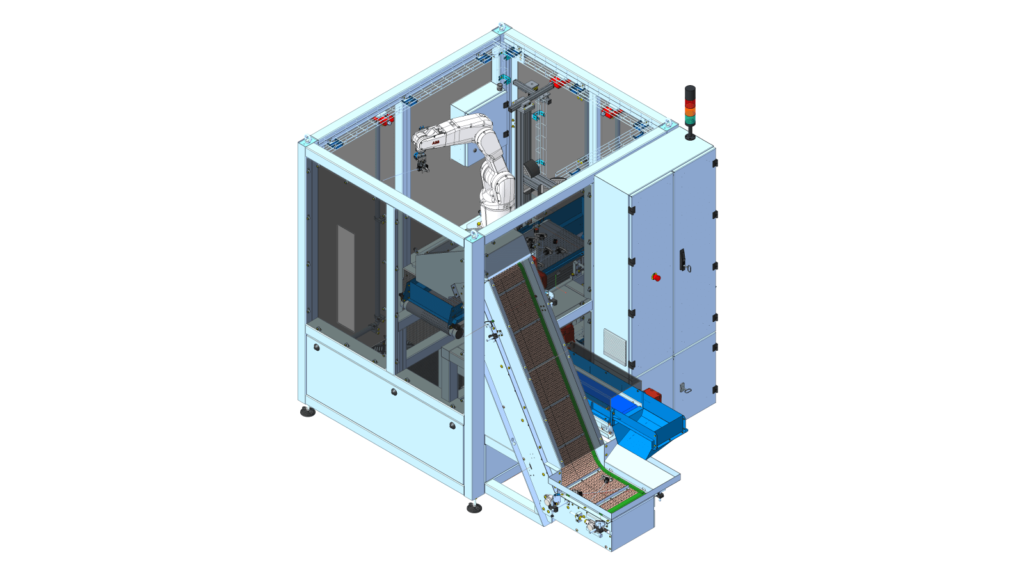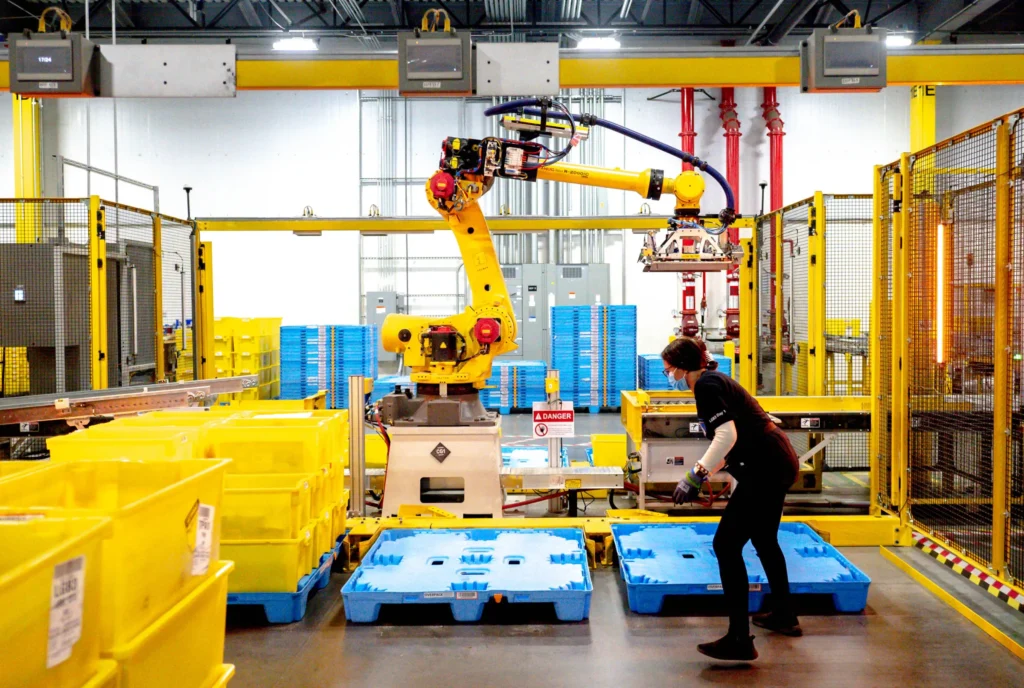
April 2025 – Texas, USA
In a bold move that signals a new chapter in logistics, Amazon has officially launched its first fully AI-powered warehouses, removing the need for human pickers entirely. The facilities, located in Dallas and San Jose, are now operated almost entirely by robotics and artificial intelligence under Amazon’s new “RoboSort” initiative.
Inside RoboSort: How It Works

These advanced warehouses feature a complex system of:
- AI vision systems that identify and classify millions of items in real-time
- Autonomous robotic arms that pick, scan, and package orders
- Machine-learning algorithms that optimize item flow and shelf organization every second
The system can handle over 10,000 items per hour, working 24/7 without fatigue, and with an accuracy rate surpassing that of human counterparts.
Why Now?
The rise of AI in logistics has been accelerating, but this marks a turning point:
- Rising labor costs and worker shortages after the pandemic pushed Amazon to innovate
- Surging e-commerce demand calls for faster, more scalable fulfillment
- Advances in robotics and AI vision now match the fine motor skills of human hands
Dave Clark, Amazon’s former logistics chief, once said, “The moment our tech becomes more reliable than humans at scale — that’s when you’ll see a real shift.” That moment appears to have arrived.
What About the Workers?

While the transition removes thousands of low-skill picker roles, Amazon claims it’s not laying off warehouse employees at scale. Instead, the company says it’s:
- Offering reskilling programs to move workers into tech support, safety operations, and machine learning QA roles
- Expanding on-site training academies for robotics and AI management
Still, critics argue the shift raises questions about job displacement, income inequality, and the human cost of automation.
The Bigger Picture
Amazon isn’t alone. Major logistics players like Walmart, Alibaba, and FedEx are already experimenting with AI-driven fulfillment centers. But Amazon is the first to go fully autonomous at scale, setting a precedent for what may soon become the industry norm.
Experts predict that by 2030, over 50% of global warehouse operations will be automated — a shift that could reshape economies, supply chains, and the very nature of labor.
Is This the Future?
Whether viewed as a marvel of innovation or a warning of workforce disruption, Amazon’s RoboSort warehouses are undeniably a milestone in tech-driven logistics. They promise faster deliveries and fewer errors — but they also challenge the role of humans in tomorrow’s economy.
The age of AI isn’t coming. It’s already unpacking your next package.
Source: Amazon Newsroom & WWJ Press Release, 2025





